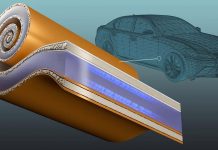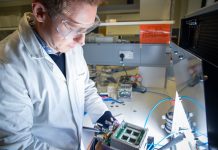
Researchers at Yale University are making exciting strides in developing solar-powered liquid fuels, a sustainable energy solution activated by sunlight.
Their work is part of a larger effort by the Center for Hybrid Approaches to Solar Energy (CHASE), a research hub funded by the U.S. government and based at the University of North Carolina-Chapel Hill. CHASE aims to create liquid fuels from sunlight, water, nitrogen, and carbon dioxide (CO2).
For the past decade, scientists have been exploring ways to convert CO2 into valuable products like liquid fuels using sunlight.
New semiconductor materials can capture sunlight and convert CO2, but they often produce multiple products instead of just one.
On the other hand, molecular catalysts can create a single product but are not stable enough for large-scale use.
This has led to a third, promising approach: combining new semiconductor materials with molecular catalysts for a more efficient and scalable process.
Yale chemists are at the forefront of this innovative method.
In two recent studies, published in the Journal of the American Chemical Society, they have shown that this hybrid approach could lead to breakthrough alternative fuel products, while also helping to remove CO2 from the air.
Eleanor Stewart-Jones, a graduate student and co-first author of one of the studies, expressed optimism about the new method.
“Both of these papers give me a lot of hope that a hybrid approach can work,” she said. “We’re definitely finding new ways to improve or enhance reactivity.”
The Yale team includes renowned professors Nilay Hazari, James Mayer, and Hailiang Wang. They are collaborating with researchers from five other U.S. institutions as part of CHASE. Wang emphasized the dedication and progress of the team, stating, “Each new discovery brings us closer to developing the technology necessary for practical solar fuels.”
One study, led by Wang’s lab and Tianquan Lian’s lab at Emory University, focused on creating an electrode made of silicon micropillars coated with superhydrophobic fluorinated carbon.
This design increased the surface area and catalytic activity of the electrode, leading to a significant boost in converting sunlight to methanol, a colorless liquid fuel.
The second study, conducted by Mayer’s and Hazari’s labs, involved using thin wafers of porous silicon with channels called nanopores.
They attached a molecular rhenium catalyst to these wafers, which improved the consistency and efficiency of converting CO2 into carbon monoxide when exposed to sunlight.
Stewart-Jones noted the uniqueness of this approach, saying, “This is the first time anyone has attached a molecular catalyst to porous silicon.” Xiaofan Jia, a postdoctoral researcher and co-first author, added, “This enables the device to directly utilize energy from sunlight to produce fuels.”
Both studies showcase the innovative and diverse methods being developed at CHASE. By combining silicon and molecular catalysts in different ways, the researchers are paving the way for new, sustainable fuel technologies.
As Wang concluded, “These two works both develop CO2 reduction photoelectrodes with silicon and a molecular catalyst, but take very different approaches.”
Source: Yale University.



